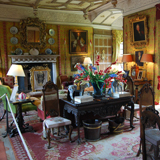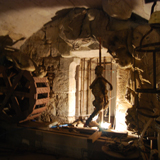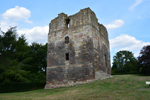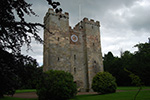History
Monks built a monastery on the land below Ross Hill in northern England. By the 1200s, tensions increased along the border with Scotland, and the monastery was converted into a fortified manor house consisting of a single tower and curtain wall. Chillingham Castle was placed in the hands of the Grey family by the monarchy in 1246 and stayed in their family for 800 years before being abandoned in 1932.
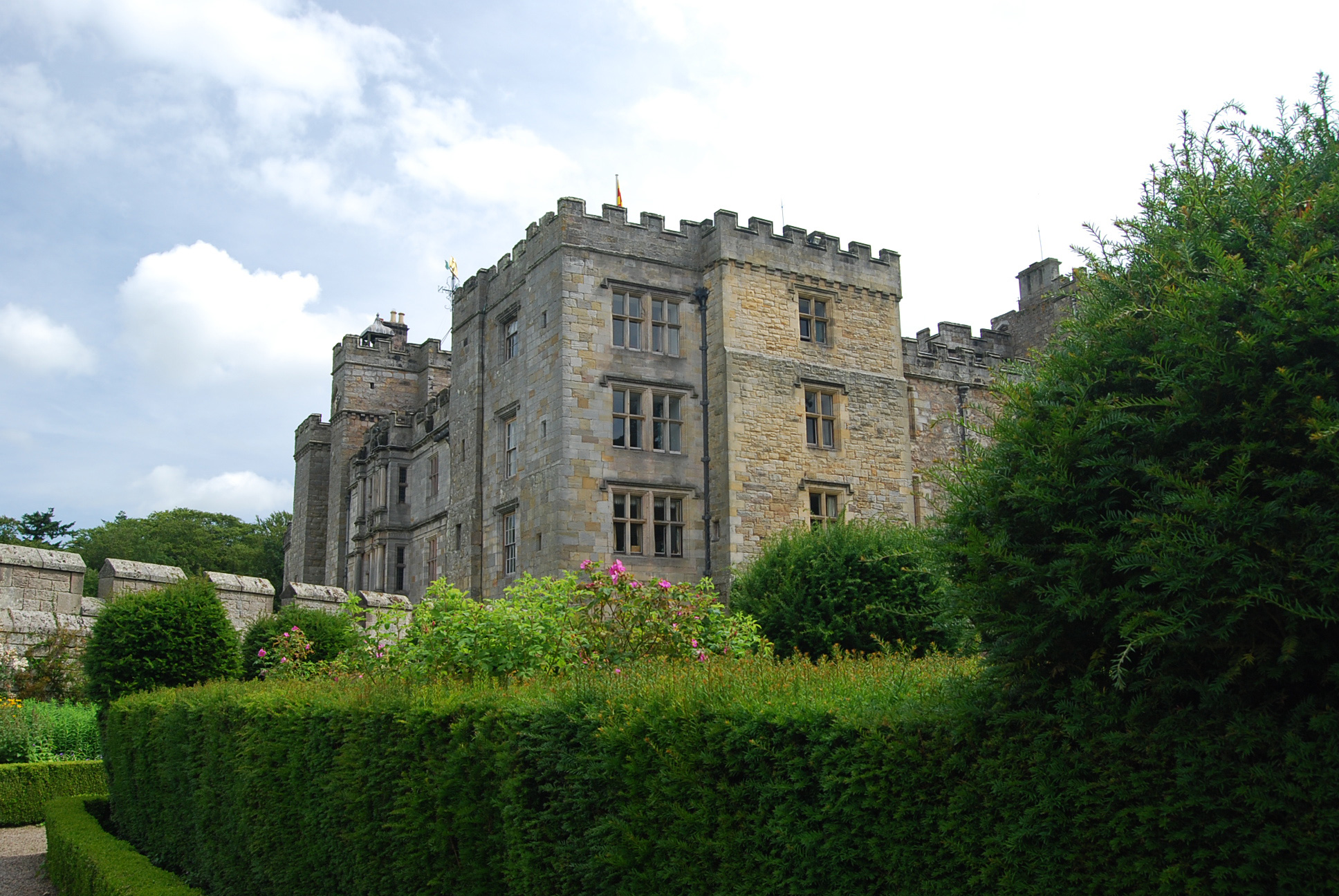
King Henry III stayed at Chillingham Castle in 1255 on his return from the borders. And just over four decades later, in 1298, King Edward I was based at the castle on his way to vanquish William Wallace during the First Scottish War of Independence, who had burned local women and children to death in a church the prior year.
In 1344, Sir Thomas Grey, one of the first Knights of the Garter, was granted a license to crenelate, allowing the Greys to strengthen the defenses of Chillingham Castle, whereby the curtain wall became a ten-foot thick quadrangle. The Greys also added towers and a moat. In 1513, the Grey family lost the castles of Heton, Wark, Norham, and West Horton to the Scots and retreated to Chillingham Castle. They then joined the 20,000 English Troops who defeated the Scots at the Battle of Flodden Field.
During the Pilgrimage of Grace in 1536, rebellion against King Henry VIII was rampant in England. Sir Robert Ellerker, the guardian of the young Grey heir, gallantly defended Chillingham Castle against superior numbers led by the Percy Family of Alnwick. The Percys battered the castle with cannon fire, requiring the subsequent rebuilding of the east curtain wall and staircase towers.
In 1590, the castle's main entrance was moved to its present location in the center of the north front. The south side of the courtyard was rebuilt as cloisters with pillars, in preparation for the Royal visit of King James VI of Scotland, on his way to London to be crowned King Kames I of England. Once James became King of England and Scotland, the border stabilized, and the need for border castles declined.
During World War II, Chillingham Castle was used as an army barracks, and the soldiers stripped out most of the decorative wood and burned it to stay warm during the winter. After the war, the castle fell into disrepair, with the lead being removed from the roof, causing weather damage to large parts of the castle.
In 1982, the castle was bought by Sir Humphry Wakefield, 2nd Baronet, whose wife Catherine is descended from the Greys of Chillingham. Sir Humphry Wakefield restored the castle to its current state and opened it to the public.
Castle Highlights
Today, Chillingham Castle is open to the public and is still the family home to Sir Humphry Wakefield and his family; and is a fine example of surviving original fortified domestic architecture in England.
Several rooms in the castle stand out above all others during a visit, the grandest being the Great Hall. The hall has a stone-flagged floor and walls adorned with tapestries, weapons, and deer and wild cattle antlers. Large windows look out into the courtyard of the castle. The opposite wall had no large windows as it was part of the castle's outside walls that were more prone to attack.
The castle dungeon and torture chamber are also significant components of the castle. Many prisoners were tortured here and held prisoner. The torture chamber displays many torture devices, including executioner's blocks and an iron maiden. In the dungeon, crudely cut letters on the stone walls can be seen carved by sad prisoners during their imprisonment. A trap door in the floor reveals a child's bones in the vault below.
The King James I Room is also engaging with its Elizabethan ceiling, gilded ribbing, and finely molded pendants. The room is furnished with paintings and tapestries related to the Wakefield family.
Chillingham Castle can be explored in 3-4 hours. Other castles are nearby to round out your trip, including Etal and Norham Castles to the north and Bamburgh Castle and Preston Tower to the east.
Chillingham Castle is said to be the most haunted castle in England.

